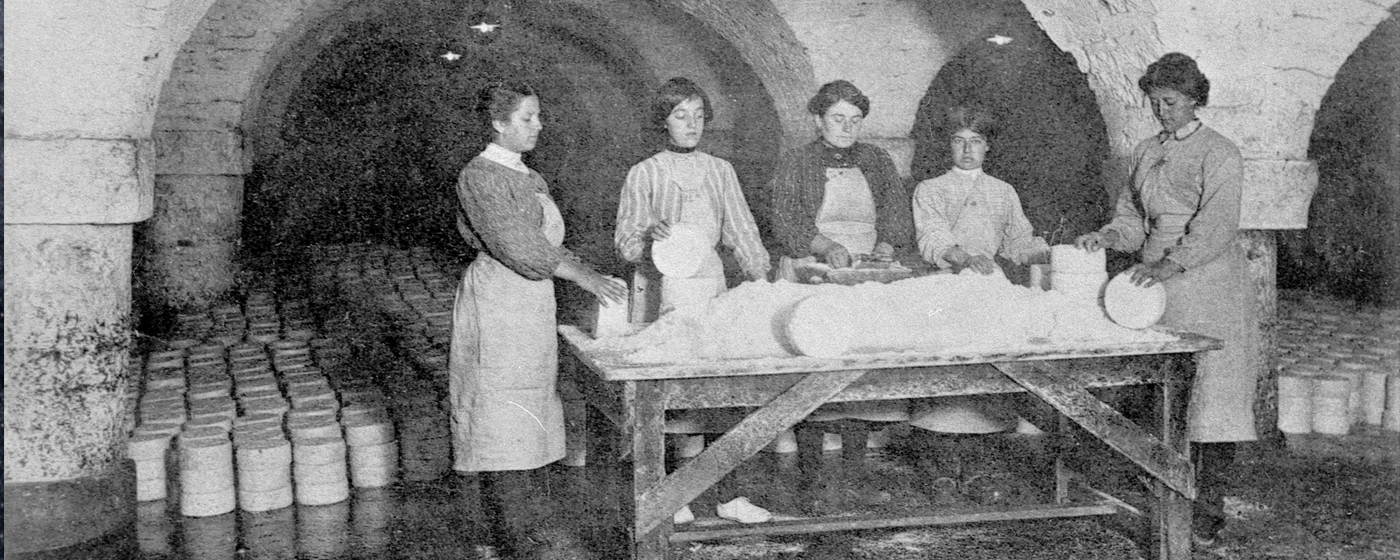Salting
Water in food can cause microorganisms to grow, which makes the food more likely to spoil. Using natural preserving agents such as sugar and salt, the water available can be chemically reduced and, as such, prevent the spread of microorganisms. People have used salt to preserve meat, fish and vegetables since agriculture first began.
Salt has helped us preserve our food for thousands of years
Throughout history, people have devised highly inventive ways of preserving food. They have developed a large number of physical and chemical methods. Salt, sugar and vinegar are food additives which have been used for this purpose for thousands of years. Bacon was already being preserved by salting in Ancient Rome, where the salting-tub was an essential item in every household wishing to maintain its provisions. Egyptians used earthenware jars for salting and the Gauls used wooden kegs. Later, in the Middle Ages, kitchens had an impressive wooden salting chest. In pre-industrial times, salt played an extremely important role in preserving food and over two thirds of the salt available was used for this purpose.
Salt is one of the oldest food additives
Water in food can be more or less available, whether bonded with other molecules or not. The greater the water availability (measured by the water activity or Aw scale), the more microorganisms can develop and the more likely the food is to spoil. Drying food reduces the amount of water available for microorganisms. Adding sugar or salt acts in the same way, by binding the water in the food.
A 10% concentration of salt acts on the pH of proteins and inhibits the growth of a large number of germs. However, it has an adverse effect on fats, causing oxidation and rancidity.
Meat is salted using a mixture of salts (including saltpetre) and sugar. The sugar counteracts the salty taste and provides the bacteria with energy to transform the nitrates in saltpetre into nitrites. This turns the meat pink. Without this process, it would be a rather unappetising grey. Salting is often followed by another treatment, such as smoking or drying.
Salt behind long-life products
Fishermen have a long history of salting their fish while at sea to protect their catch. Cod, for example, is salted and dried at the fishing site, resulting in a new product, salted cod, which is simply a new version of cod.
Herring is pickled whole or in fillets and preserved in traditional herring barrels. The technique for preserving herring in brine dates back to the 14th century.
Caviar involves a salting process for preserving sturgeon eggs.
Viande des Grisons beef, which has been salted and then air-dried, is a traditional delicacy of a mountainous region in Switzerland.
Sauerkraut is fermented cabbage which has first been soaked in brine.
Salting can be the basis of more sophisticated products, such as the Roman garum, a condiment sauce made from salted and fermented fish dried in the sun in large earthenware jars and the Egyptian lupin seeds preserved in herb-flavoured brine.
ROUX, Jean-Louis, 1994. Conserver les aliments. Lavoisier Tec Doc
AUDIBERT, Caroline, 1997. Le sel. Paris :Hatier.
LAZLO, Pierre, 1998. Chemins et savoir du sel. Paris : Hachette.
SCHÄRER, Martin R., 2013. Conservation des aliments. [en ligne]. 26 novembre 2013. [Consulté le 02 novembre 2015]. Disponible à l’adresse : http://www.hls-dhs-dss.ch






